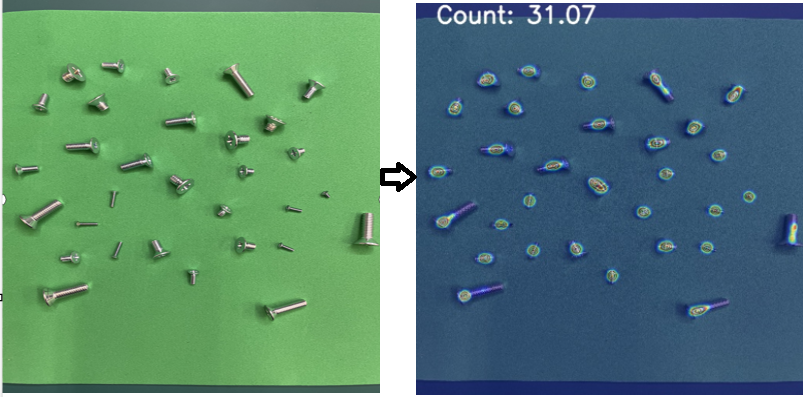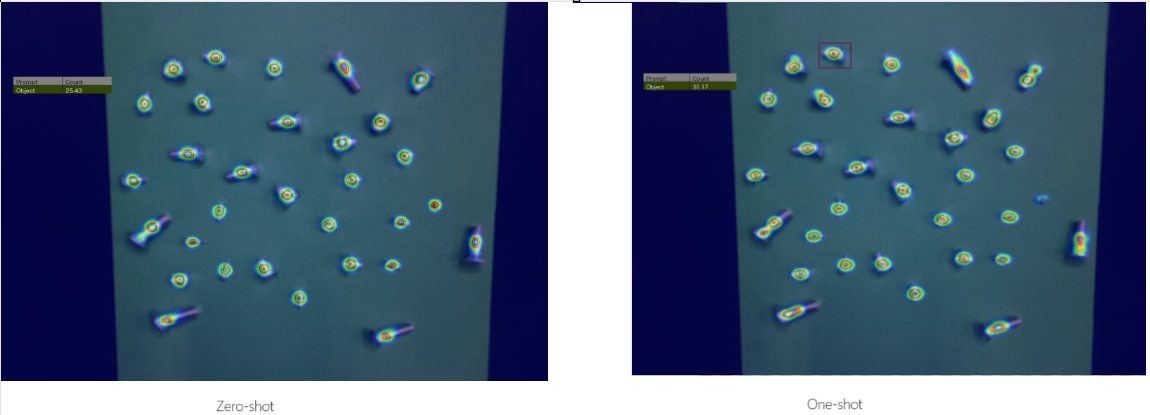LOCA
Overviews
LOCA is A Low-Shot Object Counting Network With Iterative Prototype Adaptation, which has the new object prototype extraction module, which iteratively fuses the exemplar shape and appearance information with image features.
Original git: https://github.com/djukicn/loca

Zero-shot learning is a machine learning algorithm in which a pre-trained deep learning model trained on a set of seen classes is then generalized to a set of unseen classes without any further training. This enables the model to predict new classes not seen before without requiring direct examples from that class.
One-shot learning is a machine learning algorithm that allows a model to learn how classify objects with very little data (ussualy one example). Unlike typical machine learning models that require large amounts of data for training and object classification, one-shot learning helps identify similarities between objects with very small amounts of data.
In LOCA, when using one-shot learning, detection ability will be improved, because the model has more information for detect.

Download pretrained models
Usage:
Initialize model
In the method build_model we can use it in the following ways:
import os
import sys
from pathlib import Path
FILE = Path(__file__).resolve()
FILE_DIR = os.path.join(os.path.dirname(__file__))
ROOT = FILE.parents[0]
if str(ROOT) not in sys.path:
sys.path.append(str(ROOT))
sys.path.insert(-1, os.path.join(os.path.dirname(__file__), "..", ".."))
from easydict import EasyDict
from ecos_core.loca.loca import Model
with open(opt_path, 'r') as f:
opts = EasyDict(json.load(f))
model_instance = Model(opts)
- Use custom weight:
# Build model with custom weight
model = model_instance.build_model(custom_weight=<PATH_TO_WEIGHT>)
- Build model with default options (weight will be downloaded and saved into ecos_core)
model = model_instance.build_model()
- Build model with default options (weight will be downloaded and saved according to the deploy model)
# override weight path
self.opt.weights = os.path.join(FILE_DIR, self.opt.weights)
# build model
model = model_instance.build_model()
Predict
Predict to get density maps:
output = model.predict(input_path)
Predict and count objects:
model.process_predictions("", input_path, "", "", output_path)
Configs
Example of opt.json:
{
"zero_shot": true,
"image_size": 512,
"num_heads": 8,
"weights": "./weights/loca_zero_shot.pt",
"weights_url":"https://ecos-ai-test-upload.s3.ap-northeast-1.amazonaws.com/models/LOCA/loca_zero_shot.pt",
"bounding_boxes": [],
"show_labels": true,
"type": "pytorch",
"type_shot": "zero-shot"
}
With:
weights: path to weights. If you usezero-shot, you should specify theloca_zero_shot.pt, else use theloca_few_shot.ptweights_url: URL download weightzero_shot: True if you want to use zero-shotimage_size: image sizenum_heads: is a number of attention head in modelsbounding_boxes: bounding boxes of each shot, it must be 2D array. Example if you using one-shot: [[10, 10, 20, 20]], and make sure you set"zero_shot": falseshow_labels: show labels if truetype_shot: number of shot when release model to Applications. Example: "one-shot"
APIs
Model
Bases: BaseModel
LOCA model is a model that uses A Low-Shot Object Counting Network to count objects
build_model(custom_weight=None)
Build model in LOCA model
Parameters:
| Name | Type | Description | Default |
|---|---|---|---|
custom_weight |
str
|
Custom weight. Defaults to None. |
None
|
Returns:
| Name | Type | Description |
|---|---|---|
model |
LOCA model |
get_transform()
Transform input by ImageNet normalization.
Returns:
| Name | Type | Description |
|---|---|---|
transform |
func
|
transform function. This function will take input as image path and output - raw_image: image numpy mat - image_transform: image tensor (pytorch) Example: torchvision.transforms.transforms: data transforms function |
predict(image_path)
Predict a given image path
Parameters:
| Name | Type | Description | Default |
|---|---|---|---|
image_path |
str
|
Location of image |
required |
Returns:
| Type | Description |
|---|---|
|
torch.Tensor: Density map |
process_predictions(net_output, raw_image_path, raw_image_mat, image_transform, save_image_path)
post process the output of the net
Parameters:
| Name | Type | Description | Default |
|---|---|---|---|
net_output |
_type_
|
output of detection net |
required |
raw_image_path |
str
|
raw image path |
required |
Returns:
| Name | Type | Description |
|---|---|---|
save_image_path |
str
|
save image path |
reload_param(opt_path='./opt.json')
reload parameters
Parameters:
| Name | Type | Description | Default |
|---|---|---|---|
opt_path |
str
|
Opt path. Defaults to "./opt.json". |
'./opt.json'
|